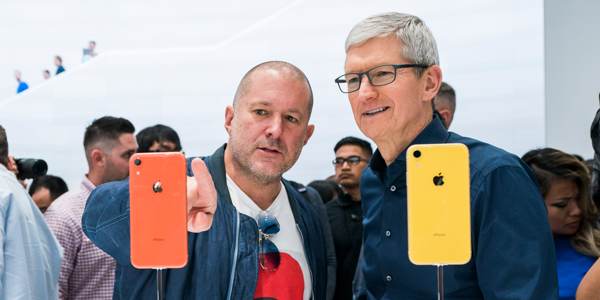The big Apple news of the week was the shock departure of Sir Jony Ive from Apple. His impact on Apple’s entire product line was profound — but that doesn’t mean he was always right.
Apple is a company that was build on a strong design ethos; you’ve only got to read the stories about the thousands that Steve Jobs spent on making sure the interior paint on early iMacs was the right shade to realise that.
Over the years he was at Apple, Jony Ive’s influence only grew, and in the most important sense for any company, that’s pretty fair. Ive’s designs for the classic iMac, the iPod and the iPhone are what made Apple what it is today in terms of popular acceptance, product philosophy and, of course the bottom line of how many products the company sells.
Now, Ive is departing, although in truth he’s not exactly going far. He’s setting up a new design firm with Marc Newson called LoveFrom.
LoveFrom’s first announced client?
Apple.
Yeah, he’s not falling too far from the tree there at all. Apple even put out a press release about his departure.
That being said, working externally for a company is quite a different thing from being in charge of that company’s visual direction. There’s no doubt that Apple will have its own internal design team heads to negotiate with. Ive is free to take on other clients, and Apple is free to reject his ideas if it chooses to do so.
That opens up some intriguing possibilities in my mind, because there’s a couple of key areas that I’d like to see Apple change up that feel distinctly non-Ive-ish.
A shift back to utility-centric design
Jony Ive loves a smooth looking design, and as his influence on Apple’s designs grew, that meant a lot more Apple gear that looked great, but wasn’t always the best functional fit for the task at hand.
Take, for example, the iMac.
The first iMac I owned was a 2009 era model; the rectangular, slightly boxy type that still had an optical drive at the side. Optical drives are definitely archaic now, but the one benefit to that thick side was that it was easily accessible.
Not so much the story for its rear mounted USB and Firewire ports.
That’s a story that continues with the iMac to this day, so if you do need to switch something out in a hurry, it’s a fiddly process of reaching blindly around the back to do so. The thicker design could have opted to ditch the drive and put ports there, but Ive’s thinner iMac has no space for that.
Pretty? Yes. But not that actually useful. It’s a careful balancing act, because Apple doesn’t want to go back to “ugly” designs. But a tilt back towards more functional designs wouldn’t go astray.
Get experimental
An iMac looks like an iMac, a MacBook like a MacBook and an iPhone like an iPhone. They’ve got Ive’s design DNA all over them, but it’s a visual approach that really hasn’t changed that much in recent times.
With Ive departing, it opens the door — even if only by the tiniest crack — for alternative design ideas to come in. Heck, you could even re-use some of Ive’s older, more interesting concepts, like the G4 Mac Cube.
Lovely design, way too expensive, way too limited. But a beautiful looking thing.
Fix the MacBook keyboard problem
Apple’s pretty insistent that its current generation MacBook keyboards are its best ever. Here, I’ll quote from the official marketing material:
The MacBook Pro keyboard features a butterfly mechanism — providing four times more key stability than a traditional scissor mechanism, along with greater comfort.
I don’t agree. I don’t even remotely agree, and I’ll say that typing on one of the exact keyboards that paragraph is referring to.
Apple dropped to this newer, flatter style keyboard a few MacBook generations ago, and it’s one of the clearest examples of style over utility I can think of. Gone was the more generous key travel – the distance the key moves down when you type on it — in favour of a flatter design that looks way “nicer” in a showroom, but all too quickly gets jammed, or refuses to respond. My current work machine has had this issue multiple times.
Apple’s general philosophy is that it doesn’t make mistakes in design, but even here there’s a tiny mea culpa; it has a program for keyboard repairs covering multiple models and years.
They’re pretty much all the years that the butterfly keyboard has been a part of the MacBook lineup. It looks like an Ive design because it IS an Ive design. With Ive less central to Apple’s design (at least a bit), I’m hopeful that more will be done to create a better design for this most vital part of any Apple laptop.
I’m ignoring here the dreaded Touch Bar, because I ignore that every day. For anyone who touch types, it’s a slower nuisance rather than a productivity tool, but I can see that the other side, for folks who do stare at their keyboards, it could be perhaps useful.
Lead image: Apple
